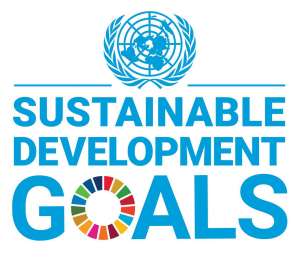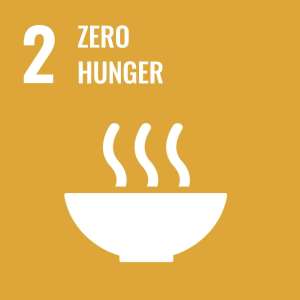World Food Day is Dedicated to Promoting Healthy Diets and Efforts to End Hunger Worldwide
Meeting and event professionals generally think in terms pleasing discerning palates when planning event food and beverage needs, not ending hunger. Sure, attendees may get a tad peckish if the general session runs into the coffee break time, but serious, stomach-growling hunger tends to be a pretty rare thing. In fact, it’s much more likely you’ll have heaping platters of food going uneaten at the end of the buffet than it is to hear anyone complain that there wasn’t enough to go around.
If only the rest of the world could say the same.
When you live and work amid so much plenty, it’s easy to forget that more than 820 million people go hungry every day around the globe. Not just, “hmm, I could use a snack” hungry, but debilitating, energy-sapping, life-impairing hunger that threatens the health and well-being of children, adults and seniors, on the other side of the world and very likely right where you live — and host your meetings.
So let’s take a moment to hit “pause” on our busy lives to honor World Food Day, October 16. Hosted by the Food and Agriculture Organization of the United Nations, World Food Day is dedicated to promoting healthy diets for a zero-hunger world, which is the second of FAO’s 17 Sustainable Development Goals: “End hunger, achieve food security and improved nutrition and promote sustainable agriculture.”
 Is this something the meetings industry can and should tackle? In a word, yes. Ending hunger is absolutely something we as an industry can do something about, as became apparent during the first ever Sustainable Policy Roundtable that took place last May at IMEX Frankfurt. Facilitated by Positive Impact Events, supported by Edmonton, Alberta, Canada Tourism, and attended by representatives from destinations, industry associations, and the industry at large, the outcome of that discussion is being used to create an “acceleration commitment” the United Nations can use to make progress toward implementing its 2030 agenda for Sustainable Development Goals.
Is this something the meetings industry can and should tackle? In a word, yes. Ending hunger is absolutely something we as an industry can do something about, as became apparent during the first ever Sustainable Policy Roundtable that took place last May at IMEX Frankfurt. Facilitated by Positive Impact Events, supported by Edmonton, Alberta, Canada Tourism, and attended by representatives from destinations, industry associations, and the industry at large, the outcome of that discussion is being used to create an “acceleration commitment” the United Nations can use to make progress toward implementing its 2030 agenda for Sustainable Development Goals.

According to a document that came out of the meeting, the roundtable concluded that a policy that the industry could use to achieve SDG 2, zero hunger, would have to:
- Enable food of all types to be donated (not just packaged food, but also “hot food”)
- “Encourage business to become the connection point between large venues and events and the communities who could use the food.”
While work is still to be done on those fronts, examples of venues and organizations looking to do their parts to end hunger by donating conference food excesses to those in need are not hard to find. One, according to the IMEX roundtable document, is the Edmonton Convention Centre, which donates approximately 4,000 kilograms of food annually to Edmonton Food Bank’s Second Helping Program to address food security in the city.
Not sure where to find a local food bank to donate to? There’s a handy locator on Feeding America’s website. And to those venues and caterers that try to tell you it’s against the law to donate leftover food? If your venue is U.S.–based, tell them about the Bill Emerson Food Donation Act, a “good Samaritan” law designed to protect you from civil and criminal liability when you donate food and grocery products to nonprofit organizations. Do include food donation in your planning from the start — for example, you might want to add a question about it on your request for proposal. And pay close attention to what ends up in the donation column — might that be something you want to order less of next time?
But food donation is just one piece of the puzzle. In addition to donating conference leftovers to feed the needy, there also are programs that redirect food waste to feed livestock or be used as compost. Some former food waste, most notably used cooking also, can even turned into a renewable energy source.
Shrink Your Foodie Footprint
Of course, as with all sustainability efforts, the most effective solutions involve preventing waste to begin with, leaving more in the food chain for those who need it. Food waste reduction starts with menu planning, and one way to cut excess on the back end is to right-size your F&B from the beginning. Review your guarantees and talk with your venue about your goal of reducing food waste — they may have some good ideas or systems already in place. A couple of ideas: Think about presetting less than 100 percent of the tables, since you likely are going to have no-shows, or using smaller plates for the buffet, since people tend to right-size what they take to match the plates.
Also rethink what you put on the menu. Can you swap out a few beef items for vegetarian options that are less resource-intensive to produce? Venues can do their part by supporting local farmers who use sustainable agricultural practices — and planners can add asking the farm-to-table question to their F&B checklists.
And do you really need all that overage? Yes, you may run the risk of running out of a popular buffet item if you slim down your BEO, but if you explain why you didn’t plan for endless shrimp that will end up uneaten and in a landfill, you may just find your attendees will be more forgiving than you think should that trough run dry. It also helps to focus on providing fewer, higher quality items, rather than heaping piles of less savory options.
A few resources you may want to check out to help end hunger:
- Rock and Wrap It Up, an anti-poverty think tank that seeks sources of renewable assets that can be shared with those in need, including food.
- The Food Donation Connection, which runs the Harvest Donation program to help organizations organize their food donation efforts.
- The Goodr app, a blockchain-enabled app that tracks an organization’s surplus food waste from pickup to donation and provides social impact reporting analytics that are complaint with IRS tax deduction requirements.
- Whole Earth Calculator, a mobile app that, among other things, converts total pounds of donated food into meal equivalents.
- ReFed, which produces the Roadmap to Reduce U.S. Food Waste by 20 percent with 27 ways stakeholders across the food supply chain can meet the national 50 percent reduction goal by 2030.



